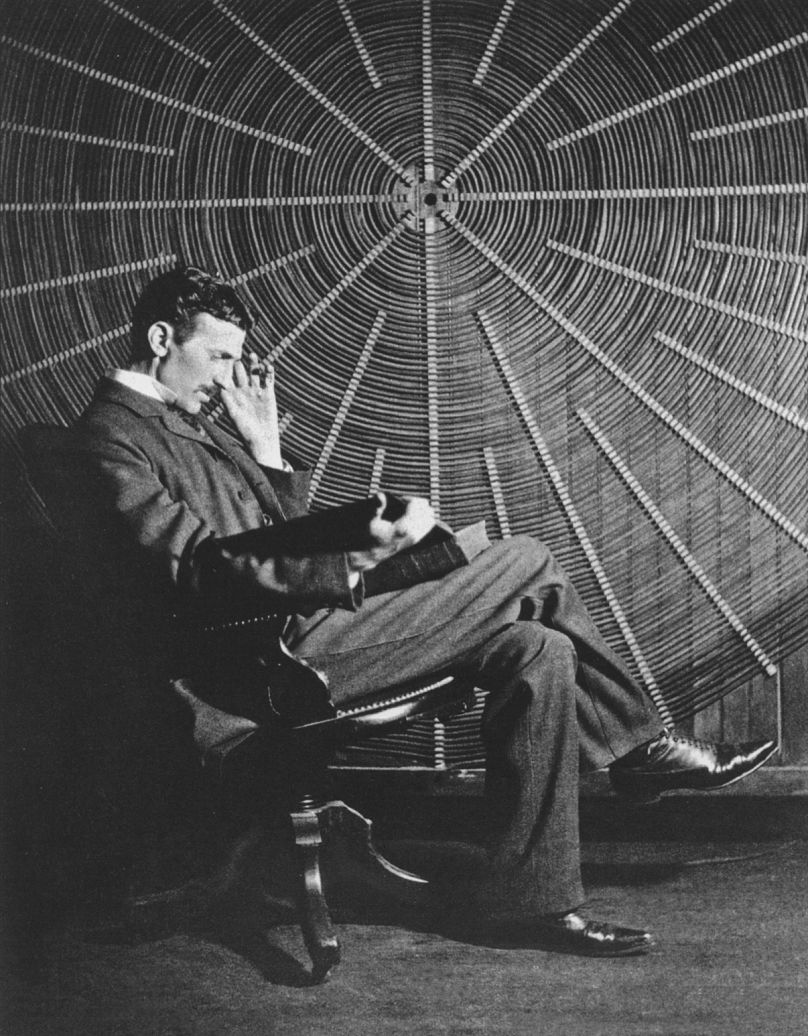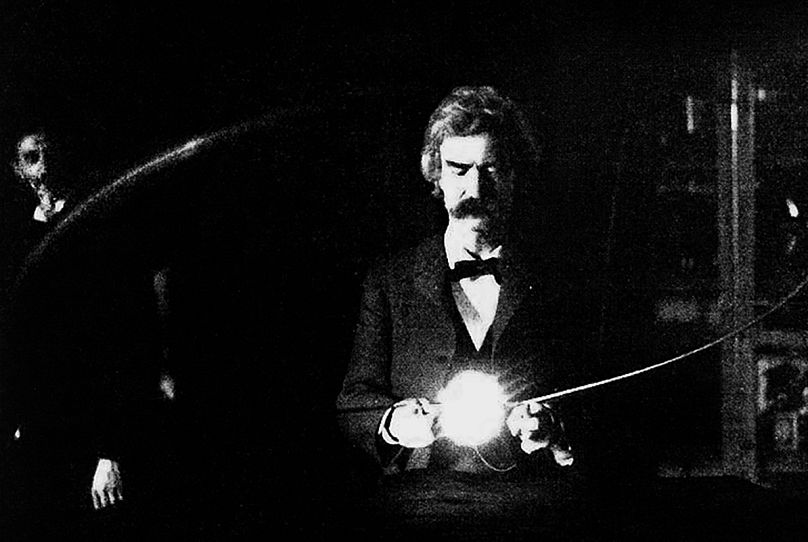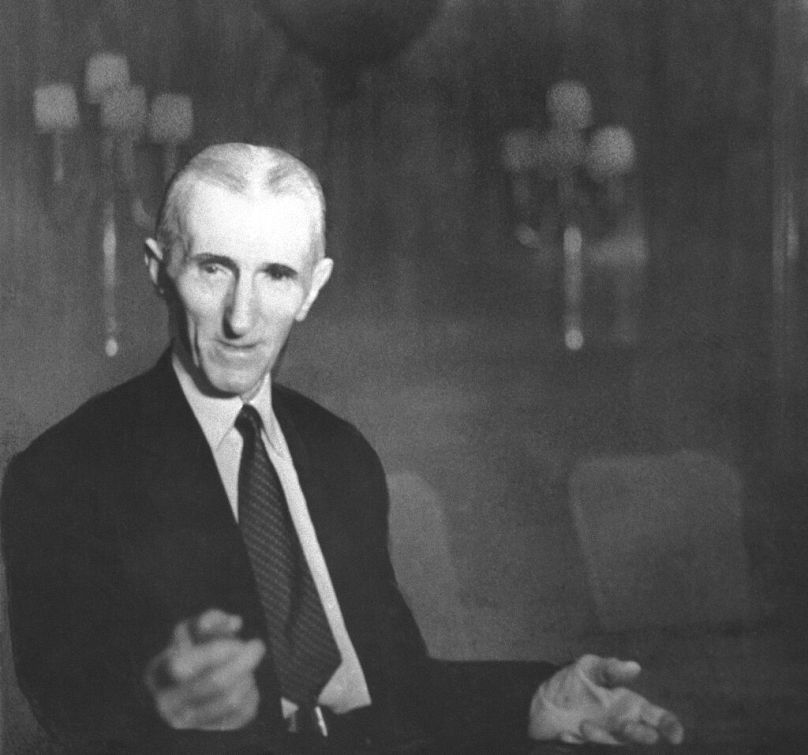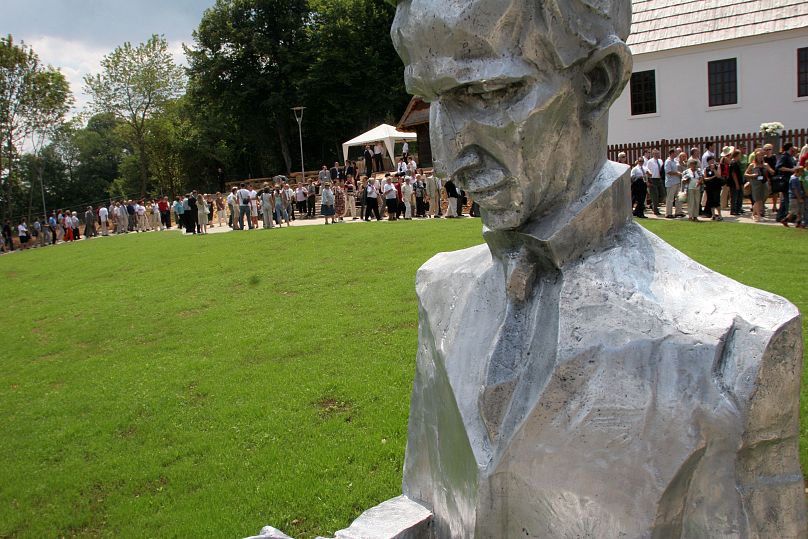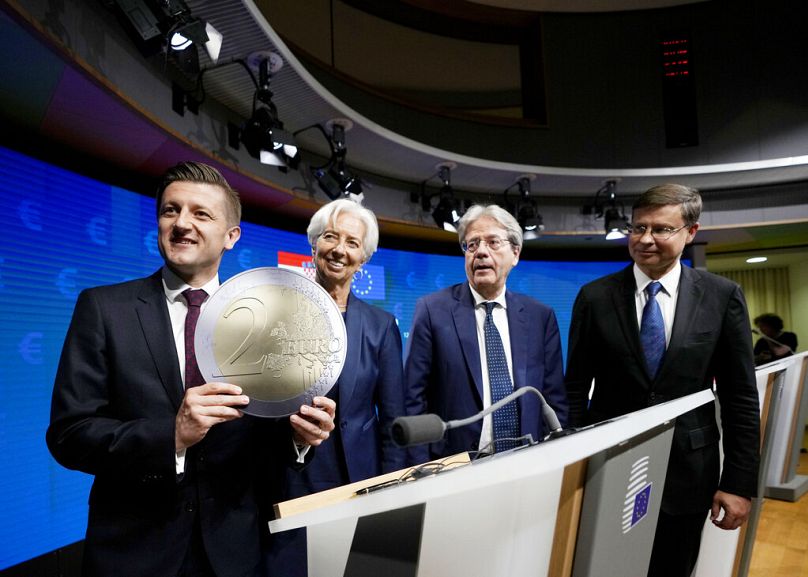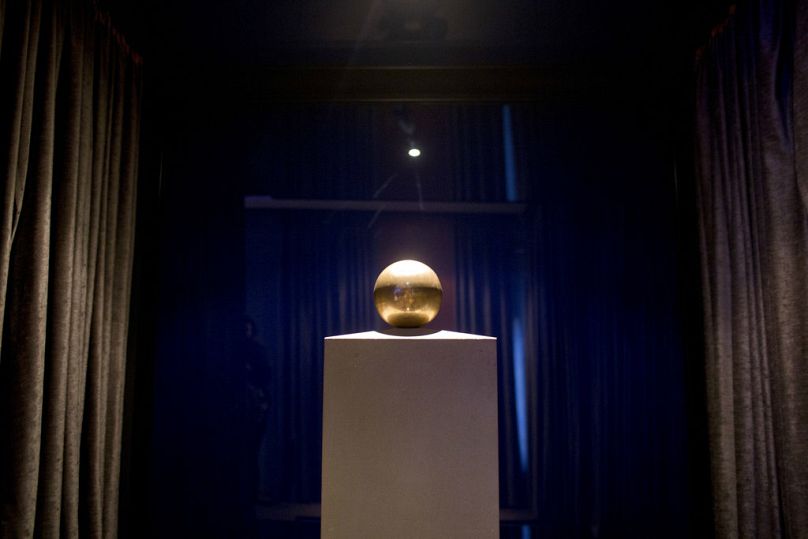Both Balkan countries claim that the world-famous inventor is ethnically one of their own. But can Serbia and Croatia find common ground regarding Tesla's heritage after all?
As Croatian citizens prepare to adopt the euro on 1 January, one historical figure has seen sparks fly almost eight decades after his death.
Famed inventor Nikola Tesla has been at the centre of a heated debate between Croatia and neighbouring Serbia ever since the former's national bank first said in July 2021 that his image would adorn the freshly-minted 50, 20 and 10-cent coins.
His ethnic background is at the root of the ongoing argument, especially among nationalists on both sides.
While Croats believe that Tesla should be seen as a Croat because he was born in Smiljan, a small village in today’s Croatia, Serbians feel that he is one of their own due to his Serb roots and nominal Eastern Orthodox faith.
The top-tier political war of words saw both Croatian and Serbian leaders trade barbs, with Serbian President Aleksandar Vučić accusing Zagreb of putting Tesla’s image on “petty change”.
Serbia has had Tesla on its 100-dinar bill. Its value comes out to some 75 euro cents.
What makes Nikola Tesla so important?
The engineer and physicist who left a significant mark on humanity is no chump change indeed.
And there is little to no evidence that he pledged allegiance to either of the two ethnic groups in his lifetime, famously dedicating all of his time to science, often at the expense of any form of personal life.
According to information provided to Euronews by the Nikola Tesla Museum in Belgrade, Tesla's native Smiljan was a part of the so-called Military Frontier, a borderland territory separate from what was then considered the heartland of the Austro-Hungarian Empire.
The Military Frontier, or Militärgrenze, was set up in the 16th century to act as a cordon sanitaire against the invading Ottoman Empire.
The Habsburgs made the Frontier attractive to those looking to partake in military service or pay fewer taxes, and soon the territory was populated by the natives of modern-day Croatia, Serbia, Hungary, Romania and other European countries.
By the mid-19th century, its population was split down the middle between Eastern Orthodox and Roman Catholic faithful.
Ethnic Serbs are nominally Eastern Orthodox, while Croats are Roman Catholic.
Born in 1856, Tesla left his village — soon to be integrated into the rest of the Austro-Hungarian Empire — to study maths and physics at the Technical University of Graz and philosophy at the University of Prague.
Struggling with his studies, despite being an unusually gifted polymath, he then spent some time in Budapest and Paris, scoring a gig with the Continental Edison Company owned by another famous inventor and his contemporary, Thomas Edison.
Edison’s company posted him to Strasbourg in 1883, where Tesla put together his alternating-current induction motor, the first of many world-changing inventions used in everything from household appliances to elevators, conveyors and cranes.
Just one year later, Tesla arrived at New York’s Staten Island as one of the thousands of European immigrants in search of the American dream.
He is said to have had just four US cents in his pocket, together with a couple of his own poems and a design for a flying machine.
Another well-known inventor and industrialist, George Westinghouse, gave Tesla his big break, purchasing his patents for the alternating-current devices he invented.
As the world turned to electric power, two camps — the Edison-led direct-current system and the Westinghouse-Tesla alternative-current setup — fought to establish themselves as the norm.
The latter won, as Tesla’s inventions helped prove that alternating current was safer, more economical and allowed for the transfer of electricity at great lengths.
At the time, Tesla was known for public displays of his intellectual and innovative prowess, often using his own body as a tool in demonstrations by allowing electricity to pass through his body and light lamps he held in his hands to prove it worked.
Other inventions, such as the Tesla coil, or his experiments with shadowgraphs, led to the discovery of radio and TV sets and X-ray devices.
By the turn of the century, Tesla had the first hydropower plant at Niagara Falls bearing his name and using his patents and successfully demonstrated that Earth itself could be used as a conductor, famously lighting up hundreds of lights remotely.
Wireless chargers and wi-fi routers sprung from this invention.
When he announced he invented the first radio-operated device, a boat guided by remote control, most were sceptical.
Yet, Tesla used another public demonstration to prove the naysayers wrong, showcasing his boat at Madison Square Garden.
The boat was, in fact, the first successfully-operated drone in history.
How come the world forgot about Tesla?
The first sign of trouble appeared as he came close to creating the first worldwide communication channel through a wireless broadcasting tower, with the backing of US financier JP Morgan.
But after that project failed due to a financial crisis and trouble with labour, Tesla’s star went on the wane, partly due to what others labelled as an eccentric, monomaniacal, and occasionally abrasive character.
The truth is, Tesla most likely suffered from lifelong trauma and possible mental health issues.
Having witnessed his brother Dane die after falling off a horse, the then-five-year-old Nikola Tesla claimed to have begun having visions.
As he grew older in New York, Tesla — a striking, popular figure who was close friends with a number of celebrities, including writer Mark Twain — sentenced himself to a life of isolation, spending the rest of his life struggling with increasing germophobia and serious financial woes.
The notebooks he kept in his later years while living the life of a recluse in Hotel New Yorker and enjoying the company of pigeons still fascinate people to this day.
The cult-like interest was additionally fed by some of his more outrageous claims, like that he eventually came up with a design for a radio-waves-based weapon that could destroy "tens of thousands of enemy aeroplanes" in one fell swoop.
Increasingly frail in his old age to the point of appearing emaciated, Tesla died alone at Hotel New Yorker at the age of 86 in 1943, in the midst of World War II. He and his legacy soon fell into near-complete obscurity.
A renewed interest by the likes of Hollywood in the early 2000s — with his character being played by other superstar celebrities such as David Bowie — and Elon Musk naming his electric car company after Tesla did find him a new, youthful fanbase more than a century after the height of his fame.
What about his homeland(s)?
Back home, after the Socialist Federative Republic of Yugoslavia was established following the Axis defeat, Tesla was venerated as the country’s brightest mind.
In fact, he was first featured on a Yugoslav 500-dinar banknote in 1970 — the biggest denomination at the time.
But the break-up of Yugoslavia, which saw ethnic Serbs in Croatia rebelling against the country’s 1991 declaration of independence and starting a bloody war between the two that ended with a mass exodus of Serbs in 1995, did not spare Tesla even in his death.
The unknown attackers, believed to have been Croat paramilitaries, destroyed the house where he was born together with a monument erected in his honour, as his native Smiljan became one of the hotspots of the war in Croatia.
Eventually, the Croatian authorities saw an opportunity to celebrate the famous inventor as a well-known historical figure of Croatian origin.
The government rebuilt his house in Smiljan in 2006 and inaugurated a monument in the capital Zagreb designed by the famous sculptor Ivan Meštrović designed in 1956, moved to the centre of the city to mark the 150th birthday of the inventor.
Both Smiljan and the Serbian capital Belgrade feature a museum dedicated to Nikola Tesla and his work, with the latter hosting a globe-shaped urn with his remains, his final resting place.
What are politicians saying?
Surprisingly, although the most recent feud launched by the euro coin controversy did see both sides claim Tesla as their own, the leaders of the two neighbouring countries did make some concessions after more than three decades of sordid relations.
Croatian Prime Minister Andrej Plenković reacted to the harshly-worded statement from the Serbian National Bank on Croatia’s decision representing “theft of Serbian cultural and historical heritage” by stating that if he were at the head of the bank, he’d say “bravo” instead.
Plenković did clarify that Tesla was ethnically a Serb and maintained that having him on the euro coin should be viewed as a positive thing. “Despite him being a Serb (...) I only see it as a plus. His stature is unquestionable and I don’t see why that would be a problem.”
He added that although Belgrade can show reservations, it was not their decision to make and that Tesla's Croatian cred was emphasised by the fact that he was born in Smiljan and went to high school in Karlovac.
It was the citizens who, in the end, decided who would be featured on the coins. “We’re not taking anyone from anyone,” Plenković said.
In turn, in a July 2021 interview for domestic Pink TV, Vučić emphasised that Tesla was “an American of Serb decent, born a Serb to a Serb father and mother.”
But like his Croatian peer, he also stated that Tesla was “a genius belonging to mankind” and that there was no issue with him also belonging to Croatia”.
Croatian President Zoran Milanović came out with what he saw as a solution in a post on Facebook, stating that Serbia could also feature Tesla on its euro coins as soon as it joins the eurozone. “All would be happy,” he concluded.
Is there a valid reason for bickering over Tesla in the 21st century?
“It’s simply about ‘what’s yours and what’s ours,’” Igor Štiks, a writer from Sarajevo and Zagreb who works as a university professor in Belgrade and Ljubljana, told Euronews.
People from the past had very complex ideas about who they were and about their ethnic, religious, regional or political identity, he explained.
In Tesla’s times, being Catholic or Eastern Orthodox did not immediately translate to being Croat or Serb as we understand it today.
But the historical events since then and the rise of nationalism in the former Yugoslavia have forced everything and everyone to be examined through the exclusionary lens of their ethnic belonging.
“Ethnonationalists cannot stand sharing anything with anybody else. They want exclusive ownership. And now the poor Nikola Tesla is the victim of this ethnocentric logic of partition, fragmentation and ownership,” Štiks said.
The Croatian decision might, however, also represent a small step in the country’s recognition of its ethnic Serb minority as a constitutive element of its society — if their heart is in the right place, Štiks emphasised.
“If Zagreb wants to say that Croatia of the future is a country that will embrace ethnic or religious diversity on its soil, that it’s open to the Serb minority as a constitutive people of Croatia, then, of course, this is something that we could approve and find it as a gesture,” he said.
“If it wants to only insist that Nikola Tesla was born in Croatia, and neglect his Serb ethnicity and Orthodox faith (of his parents), then obviously it wants to rewrite its own history according to an ethnicised narrative.”
Meanwhile, the Serbian reaction is in line with Belgrade’s insistence on protecting its interest along its own ethnocentric narratives, Štiks explained.
“The fury in Serbia is also quite curious. Nikola Tesla allegedly spent maybe one day in Serbia, and certainly he’s not much related to the country apart from his Serb ethnicity.“
"Obviously, it’s his Serb ethnicity that counts here and not the huge inventions that he gave to mankind.”
Although Tesla never explicitly sided with either of the two ethnic groups, a telegram he sent in 1936 to the deputy head of the Kingdom of Yugoslavia’s government, Vlatko Maček, is indicative of the thoughts he had on his heritage in his later years.
“I’m proud of my Serb origins and my Croatian homeland. Long live Yugoslavs,” the telegram read.
In another letter from 1942, Tesla said that as "the eldest Serb and a Yugoslav" in the US, he called on his compatriots to heed President Franklin Delano Roosevelt's call to join the fight against Nazi Germany and its allies.
"The destiny of Serbs, Croats and Slovenians in the ancient homelands is unbreakable, no matter what the enemy might try to do," Tesla exclaimed.
“This means that he considered himself primarily as Yugoslav, as someone who also unites all these different peoples in all these different regions,” Štiks pointed out.
“If contemporary Serbia and contemporary Croatia were to accept what he actually said, then they would work — thanks to the image of Nikola Tesla, thanks to his message — towards a better future of peace and cooperation and prosperity for these Balkan nations.”












